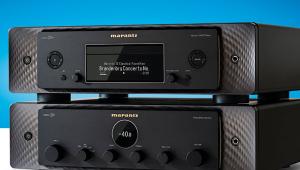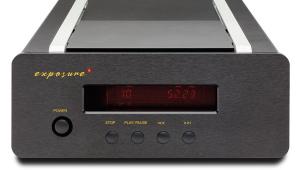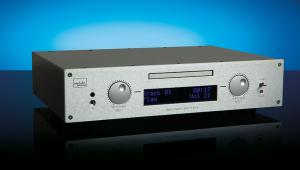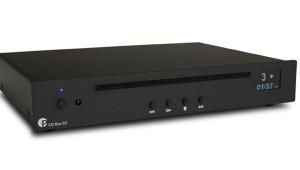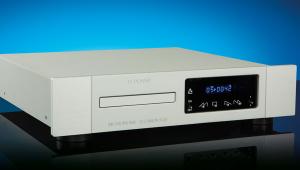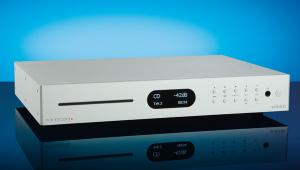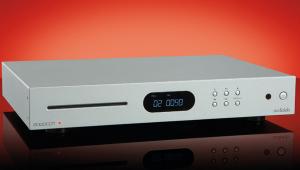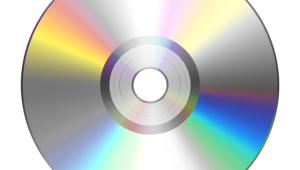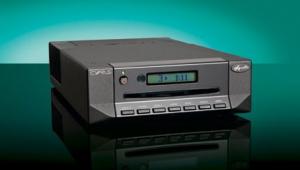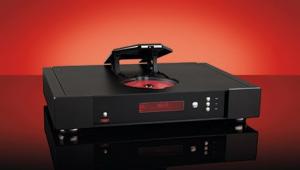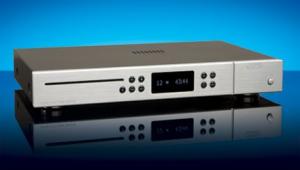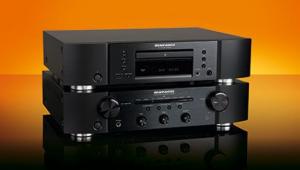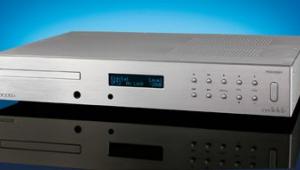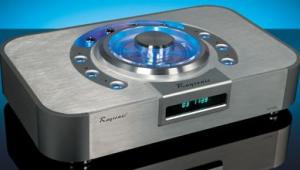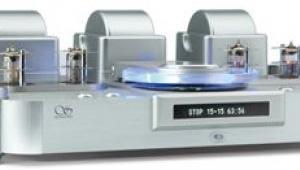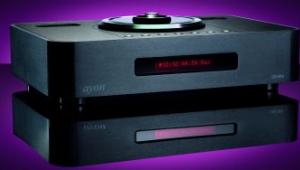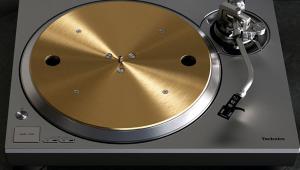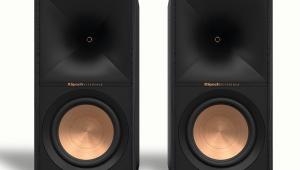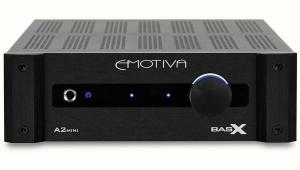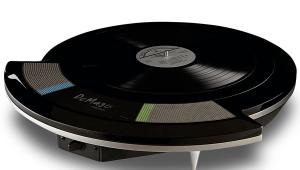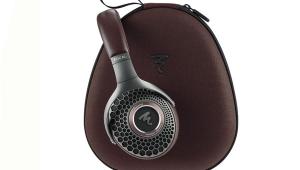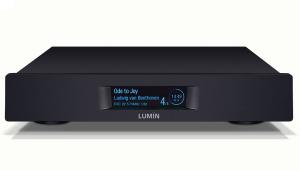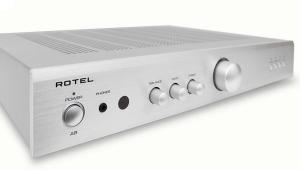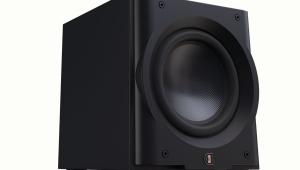Resolution Audio Cantata CD Player/Streamer - £5,995
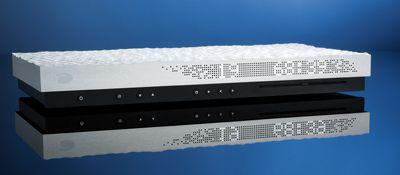
Resolution Audio’s Opus 21 has been a reference CD player for us since it’s introduction at the turn of the century. This diminutive two-box unit gives more detail, dynamics and sheer musicality than most and we will be very sad to see it go. Or, at least, we will be, if we can’t get our hands on its replacement the Cantata Music Centre.
Because not only does this new player look incredible, it also manages to up the sonic ante to an unprecedented degree. And not just for CDs, plug your laptop in or even your home network and it can do remarkable things for music stored on a PC or NAS drive. Hence the Music Centre soubriquet, this is not just a disc- spinner, it’s a fully featured UPnP ‘renderer’ with an asynchronous DAC that can do for digitally stored media what the Opus 21 did for CD.
Permanent wavesThe Cantata came about because Resolution’s Jeff Kalt wanted to build an iTunes client into the XS (extra sources) box that forms part of the Opus 21 series. He ended up being frustrated by the limitations of air tunes – specifically its 16-bit/44.1kHz maximum resolution, so he started working on a streamer, CD player and USB DAC that turned into the Cantata. While this unit retains the same 1704 multibit ladder DAC as the Opus 21 and the same basic circuit design, it doesn’t have many other similarities to its predecessor.
The most obvious change is the casework, which is both radical and beautiful. Machined from solid aluminium, it is designed to offer a significant improvement in resonance control over the sheet metal Opus 21, while also offering a large heatsink for the components within the player.
Jeff actually worked with the Neal Feay Company to come up with what he describes as “an aesthetic that is softer, perhaps more organic, than traditional machined designs.” The case is one reason why the Cantata is 50 per cent more expensive than its predecessor, but the other companies that use metalwork from this source all charge significantly more – just look up Constellation Audio and you’ll get the picture.
The significant technology here is the degree of isolation that has been achieved inside this machine. Jeff has effectively floated the DAC, so that it only grounds to the amplifier and is magnetically isolated from the power supply, internal transport, display and all of the digital sources (including USB and the host computer). He has also developed his own asynchronous USB software for connecting computers to the DAC. It works by pulling the signal from the computer rather than the other way around, so the DAC controls the flow of data and provides clocking with its own precision clock. This makes USB a potentially better conduit than S/PDIF because jitter can be virtually eliminated by the interface. The Cantata’s output connections no longer feature a DIN socket, but come in single-ended XLR and RCA flavours, both of which are volume- controllable. So you can hook this unit straight to a power amp or active speaker system and use the onboard analogue volume control.
Alternatively if you want to use a preamp or integrated amp, then just set the level to 100 and bypass the attenuator. Inputs are really what the Cantata is about and why it is dubbed a Music Centre. You can hook up external sources via S/PDIF in three flavours, USB and Ethernet which means that any source with a digital output can be accommodated.
Resolution Audio also makes a device called the Pont Neuf, that converts USB to Ethernet and gives you much more range than USB, which Resolution recommends keeping to a maximum of two metres.
The transport used is a Sony device that slot-loads on the right hand side of the player. It’s well hidden, but not hard to find. Jeff did speculate about having the slot emit a white light, but changed his mind (more’s the pity). It’s a high-speed drive that was chosen for reasons Jeff explains in our interview on the next page, but it’s not totally silent – which can be an issue when listening to quiet material late at night. The dot-matrix display is particularly nice in the context of the drilled-out fascia, it tells you the sample rate of incoming signals unless it’s spinning a disc, in which case track time and number are shown. It can be dimmed or extinguished, but looks best at its lowest brightness.
TactileThe quality of machining on this casework has to be seen and fondled to be fully appreciated, it is something else. Whether you like the styling is obviously a matter of taste, but in our view it makes a refreshing change to the ubiquitous cooling fins found on every other high-end component. It is a solid, but compact piece that’s only 230 millimetres deep and fifty millimetres high. This makes it easy to accommodate, but not, perhaps, as beefy as one might hope for the money. This, however, has always been RA’s approach, keep the metalwork and the signal path to the minimum and you will get better sound, which is clearly the case here.
The remote is a basic plastic affair, but it’s a dedicated device that allows input selection, track select and volume control in an ergonomic if relatively dull fashion. More important is that it has an eject button, something sorely missed on the Opus 21.
It doesn’t have a great deal of competition, but the most obvious comes from Naim, whose NaimUniti and UnitiQute perform in a very similar way – both are also wireless devices. For his part Jeff doesn’t like mixing wireless receivers with audio electronics and the sound quality he achieves would seem to make a good case for this argument. That said the Cantata is more expensive than either Naim streamer, so it has its work cut out in the real world.
The alternative, of course, is to go for a standalone streamer and player but we haven’t heard a player of this standard for less money let alone one with a USB DAC.
Paradigm shiftThat big slab of aluminium takes a while to get up to temperature and likewise, the sound takes a while to reach full formation. But when it does there is no going back. We have never heard a digital source that can deliver as much of the sonic envelope as the Cantata. It reveals all the decay of each note or sound and provides an incredibly three- dimensional picture of the music.
This really is one of those components where you have to start going through your music collection to hear what else is on each disc, something that happens very rarely when you’ve tried as many top-notch CD players as we have.
There are a few very detailed players around, such as the Moon 750D and Boulder 1021, but neither of these compel you to play as many of your discs as you can in quite the same way as the Cantata. The more familiar an album, the more you appreciate just what it’s pulling out of the mix, the end of Genesis’ Supper’s Ready for instance, revealed layers that have never been hinted at by previous machines. This is nothing short of astonishing, given that we’ve heard the SACD layer plenty of times before and the Cantata is finding even more on the CD layer. That particular revelation was assisted in no small way by a Mark Levinson No.326S preamp, which made quite a useful contribution, but didn’t stay long enough (it’s coming back though, see next month’s HFC). Fortunately, the full envelope effect continued after it had gone.
Despite coming from the same mind and DAC chip as the Opus 21, the only similarity between these two players is in their ability to involve you in the music. This isn’t quite in Rega Isis territory, but it’s unfeasibly gratifying for both head and heart. Zappa’s Sleep Dirt album isn’t the cleanest of recordings, but there is a lot more grunt, dynamics and timbre to be found on it that is usually apparent thanks to the extra resolution. The title track is a guitar duet with Zappa on an odd sounding instrument that’s usually rather clattery but it’s not clear why, the Cantata showed that this is because of the way that echo was used in the recording. The considerably slicker Love Hater by Outkast, has monster bass that has obviously been laboured over to give it such a distinctive shape and colour and this ability to hear right into the character of each part of the sound (in a way that allows the musical flow to grip you) is very rare.
Given the effort that Resolution Audio has gone to on the USB input, we also gave that a spin using an Apple Macbook running iTunes with the output set to 16-bit/44.1kHz. The result is a bit warmer and slighty softer than with CD, the disc giving greater focus from a drier balance but not necessarily bettering it in all respects. With a lot of material the USB route is very appealing and musical, it delivers the same quality of timing as the disc and virtually as much detail. This is the best result we’ve achieved with this approach and quite an ear opener to the possibilities of digital files.
Silver liningIn case it isn’t abundantly clear by now, we are pretty much smitten with the Cantata Music Centre. It reveals so much more of the music that we have to wonder how it is achieved. Jeff has attempted to answer this before, but in a recent exchange put it more simply “I suppose I have the world- wide slowdown to thank for giving me the space for design work.”
The fact that it looks so good and can bring such high standards to music stored on a hard drive is equally relevant for the modern audio enthusiast. If you really want to hear just how much effort was put into making your favourite albums such an unforgettable experience than make a date with the Cantata.
LIKE: Hearing so much more music, design, ergonomics, display and tremendous flexibility
DISLIKE: Transport whine is an issue
WE SAY: Revealing to a degree that sets it apart from the competition at way above its price point
DETAILS
PRODUCT:Resolution Audio Cantata CD player/streamer
ORIGIN: USA
TYPE: CD player/USB DAC/streamer
WEIGHT: 6kg
DIMENSIONS: (WxHxD) 500x430x230mm
FEATURES:
• Computer inputs: USB, Ethernet
• Linear display
• Burr-Brown DACs
• Cantata link bus system
DISTRIBUTOR: Redline
TELEPHONE: 01268 858222
WEBSITE: resolutionaudio.com
 |
Inside this month's issue:
Ruark R610 music system and Sabre-R standmount speakers, PMC twenty.23i Active, floorstanders, English Acoustics Downton preamplifier, Bluesound NODE ICON preamp/streamer, Ortofon Concorde Music Blue MM cartridge and much, much more
|
